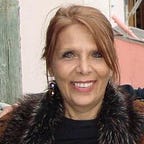How to Calculate a Market
Advanced intelligence: 50–50.
If everything is perfect, you will capture one-quarter of the market. Whatever the size of the market. No more. No less. Why? 50–50 is the basis point.
Between any X and Y, diameter, and circumference, prove, two is the only (natural) number. To get from any number, to any other number, the number two stays constant. Therefore perpetual motion is absolute zero (the variable is a constant) (and vice versa).
So 50–50 is the constant. And 50–50 is the norm.
You can multiply, divide, add, and-or subtract, any X, and-or, Y (zero and one). You will always end up with a zero, and, a one. Zero, and one, is a binary system responsible for the decimal system (and vice versa).
You cannot have a zero without a one, because you cannot have a circumference without a diameter. This makes the world go round. It’s also what makes markets go round.
So, up and down, is, left and right, is, 50–50, on a, circle. Thus, 50–50, of, 50–50, is one-quarter. No more. No less.
If your market is hot, you stay at one quarter. If it is not, you have to analyze the logarithmic value of ‘two’ to see how hot it is (or not). There is a natural ‘stop’ at 64.
That is, four to the third power is 64. This accounts for ‘ready, willing, able.’ And is the ‘true’ number for any market. Over-estimating is natural. Under-estimating is natural. Accurate estimating is impossible (unnatural).
Nature hopes you will do whatever you want so it can ‘keep going.’ Nature cares nothing about numbers. It wants you to ‘keep going,’ along with it, so you both can survive. The rest takes care of itself.
Conservation of a circle is the core dynamic in nature.
